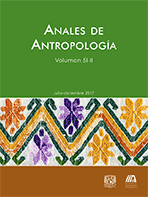Coprolites of mice as paleoenvironmental and paleodiet indicators at the Huaca Ventarrón site, Lambayeque, Peru
Main Article Content
Abstract
This research is related to the analysis of rodent coprolites registered at the Huaca Ventarrón site in Lambayeque, considered a ceremonialsettlement of regional importance and chronologically associated with the early Formative Period in the Central Andes.The research problem is associated with the determination of paleoenvironmental and paleoclimatic characteristics present in the pre-Hispanicsettlement and types of food consumed by the rodents who produced the coprolites registered in the A1 deposit at the Huaca Ventarrón site.Coprolite rehydration (Callen y Cameron, 1960) and isolation of grains methods (Weir y Bonavia, 1985) were used in order to observe thepresence of hair cells and pollen grains. This enabled plant debris to be taxonomically classified, remains to be grouped in accordance with growthhabit, the utility for humans to be determined, the plant community associated with the remains to be identified and the type of paleoenvironmentand paleoclimate at the Ventarrón site to be established.
Downloads
Article Details
Citas en Dimensions Service
Esta revista usa una licencia CC del tipo CC BY-NC-ND 3.0. Se maneja bajo el esquema de acceso abierto, con una licencia Creative Commons Attribution-NonCommercial-NoDerivs 3.0 Unported.
